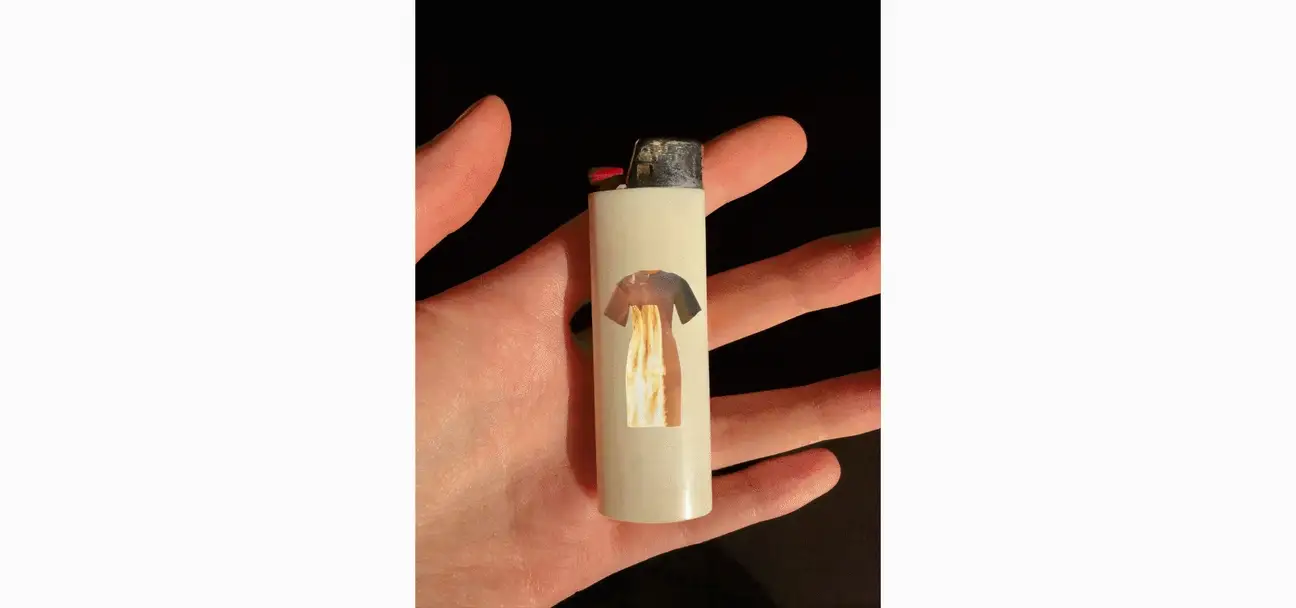Ukrainian conceptual artist Hanne Zaruma is well-known in a global digital art community for transforming technologies of the past into the accessories of the present. In her 22, Hanne has already been featured in the top-media, such as Vogue US, i-D, and Metal Magazine, earning her fame as an Instagram-artist everyone is obsessed about.
Recently, Hanne Zaruma joined forces with DressX to create a special art project merging digital and physical realms available for purchase as NFT at KnownOrigin. We talked to Hanne to learn more about her creative journey, successful career in art and fashion, and impressions from working with digital-only clothes.
Published here are the artworks from Hanne Zaruma's first digital art drop for DressX. All the artworks have been selected and curated by DressX art expert Olga Sushko.
For those who might not yet know who Hanne Zaruma is, how could you describe yourself and your art in just a couple of words?
All I can say is that I am a conceptual artist working in many different directions. Most of the time I don’t want to say anything about what I do - I let my art speak for itself. If you look at my works, they will tell you more about me, than I could ever do with words.
The signature style of your artworks lies in the combination of things that normally wouldn’t be combined in real life. Like, for example, nostalgic old phones from the past with the new technologies, AR filters, and editing software. What is it that made you think about such an idea in the first place and how was your popular artwork-turned-Instagram-filter born?
Actually, even though people usually think that I am really progressive and innovative when it comes to tech, I create all my artworks literally in one single programme on my phone. It may seem surprising, but I absolutely cannot use professional software like 3D Max or Photoshop.
It was the same with my Instagram filter. If you think that I know how to create AR filters - I have to tell you I don’t. Actually, back then I just created my new artwork - my own face recreated with several different old phones, and I wasn’t even sure if I should post it. It was my sister who made me share it, and moreover, she insisted that I put it first in my selection. In a couple of hours I started getting more and more people tagging me and adding their faces instead of mine on the pictures. They kept tagging me and at some point I even thought it was a prank! Only after I got more than a hundred pictures like this did I realize that I should probably create a filter of it since people wanted to engage with it so much. But again, I don’t use a computer and I knew nobody who would be skilled in making things like this. I remembered one guy who approached me offering to create a filter for me, and I thought yes, that was the time. I sent him this picture and in a day the filter went live. To tell you the truth, I didn’t expect any reaction at all, I didn’t even know how to check the statistics on Instagram. When I finally did check it after a week it was live, the filter was viewed 11 million times! 11 million! At that point I only had 10K followers on Instagram, and this mask felt so big to me. Till now the filter has been viewed 90 million times.
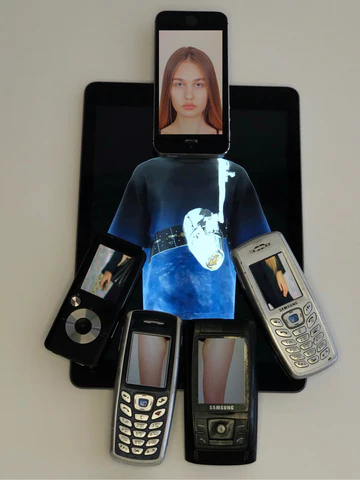
To date you have also been featured in several big international publications, such as Vogue US, i-D, Metal Magazine and more. How did these publications influence your career?
Even when I didn’t have a big social media following, my works were regularly reposted by different publics and communities, and I remember crying every time I got a good review or got reposted. It was giving me so much energy to grow and create even more!
One day I was approached by a journalist from Vogue US, yet not from their official Instagram page, but from his personal account. I honestly thought it was some kind of a joke. He asked me 4 questions and requested an interview via phone. To be completely honest, English was not my biggest strength at the time, and so decided to ask my old friend, who lived in Canada and was fluent in English, to give this interview instead of me. I mean, she knows me quite well, so this didn't seem like that big of a deal. When the interview got published, I was shocked! (laughs). To give you a bit of a context, I am doing everything by myself and I remember how hard it was to find people to shoot for my artworks. In the interview, though, it was said that I have lots of friends who gladly help me to shoot whenever I ask them to. I wish it was like this!
Actually, I am not a big fan of giving interviews, which is why I tend to ask my friends to do it for me quite often. I also never take the projects which I don’t like and only try to invest in what really excites me. But yes, sometimes it doesn’t do me a favor since after such interviews my friends really don’t get why I said what I said. Now you know, that’s simply because it wasn’t me giving that interview! (laughs)
Probably it was our best decision to do this interview via video call - now we can make sure that it is really you who gives it (laughs).
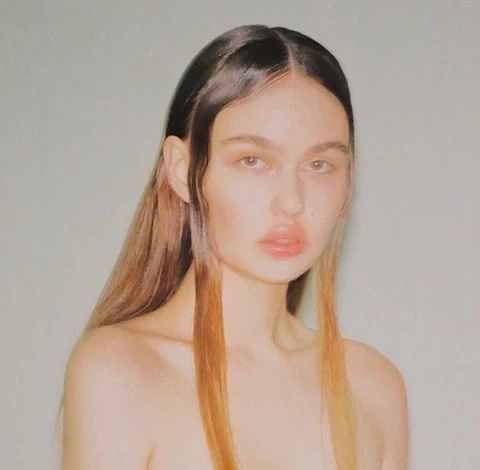
Seems like you never run out of ideas for your work. How does your creative process look like and where do you get inspiration for your art? Did the quarantine change anything about it?
Overall, my creative process is different every time. Sometimes the ideas come naturally and unpredictably - they just appear like pictures in my head and all I know is that I have to turn them into reality. Only after I have them done in one form or another, I start to analyze what is the concept behind them and what message I have created. Conversely, sometimes I start with the idea or the message I want to convey, and only then I begin brainstorming how to picture it, what materials would I need for it and so on. I personally prefer when ideas just come out of nowhere and the concept appears along the way - it just feels natural to me and everyone seems to like the result.
I used to study law in the university, and my art truly became a lifesaver for me. I woke up early to be able to shoot before the studies, and usually got late or skipped lectures because I got so excited about the process of creating art. When the quarantine started, I was actually very happy about it, as I instantly got more time to create and more ideas to fulfil. The first 3-4 months of the lockdown were just great - I was so inspired and literally had something to share everyday, it seemed like I would never run out of ideas! But then by the end of summer I started to feel that things are changing. I rarely spoke to anyone except my relatives, and it started to feel like ideas weren’t coming that easy anymore. I was taking notes of my ideas on my phone, and when I got to the last one for the moment I thought that I would never be able to come up with anything else ever again. Of course, it wasn’t true, but yes, the lockdown definitely changed the way I work and made me think harder of what I want to create.
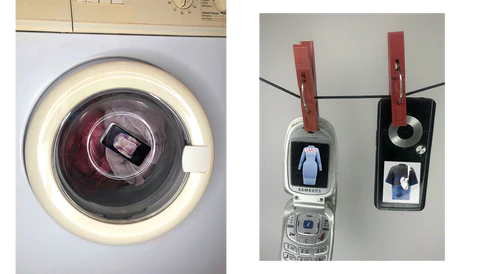
Previously you also used to work in fashion, building your model career. What did modelling give you in terms of understanding the industry and what do you think about the state of fashion today?
Thanks to modelling I realized who I am and whom I want to be. When I was a model and had all those people working around me - stylists, photographers, make-up artists, art-directors and so on, I understood that I had no right at all to express my own opinion. Deep inside I knew that everything could be done better - I could shoot better, I could do better make-up for myself, I could create a better dress, I could even do better decorations for the show. My opinion, even though I knew how to make things better, didn’t bother anyone, cause I was just a model for them. Now I know that I don’t want to ever be in a situation like this - I want my voice to be heard.
I love fashion, but not the consequences it brings for our environment with excessive production, seasonal trends, mass-market, and tons of unnecessary waste. Fast fashion is something I will never be okay with. People are rushing somewhere, they want to show off and constantly prove something to others. I noticed that people who actually bring value to the table and who made something of value in their lives don’t care that much about their outfits. They all wear simple clothes and look almost the same, as opposed to lots of really shallow people who have huge wardrobes and change thousand times per day in an effort to get noticed - at least that’s how it looks to me. Luckily, we are having more and more conversations about sustainability and recycling now, compared to even 5 years ago. Although there’s much more work that has to be done yet, I believe we are on the right track.
Tell us more about your art project for DressX. Have you ever heard of digital fashion before and what was your first reaction when you learned about it?
It might sound surprising, but after doing some traditional painting which I started my career with, the next thing I was experimenting with were pants which did not exist in real life. Yes, right, I created virtual pants, but for some reason people always thought that they were real. Those pants were made from leaves or some digital prints that I created on my phone - I still have them on my Instagram! Actually, that was my take on virtual fashion, even though I never knew that it was a thing back then. That’s why when I heard of DressX, virtual fashion instantly felt very close and appealing to me, cause in some way I was already a part of it. What DressX is doing is just 10 steps ahead of the fashion industry we know today.
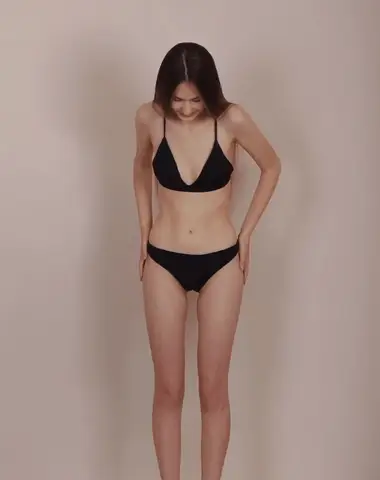
How much time did it take you to work on this specific art project?
As I said, DressX project felt very easy and natural to me. When I heard of it, I instantly knew what I would be doing. It was so close to me, that I actually created most of it on my Birthday. I didn’t know how to get myself busy, and I just decided to shoot. What a great day it was! I did around 70% of this project on my actual Birthday, and then I went to celebrate with my friends.
Sustainability is at the very core of the idea of DressX and we are constantly trying to show that some physical items can be easily substituted with the digital ones, without creating any additional waste for our environment. What does sustainability mean to you and is it important for you to convey this topic through your art at all?
Honestly, I do my art the way I do it just because I genuinely liked living like this. I rarely get a thought to go and buy something new. Why would I buy anything for my projects if I can just go to the flea market and shoot there? Why would I buy anything at all? Or why would I throw anything away? It was actually later, when people started asking me specifically about the topic of sustainability and started to introduce me as a person who puts ecology first in my art. But generally that’s just the way I live and always used to live.

In one of your previous interviews you mentioned that one of your aims is to show that art can exist without money. Do you think that virtual fashion and virtual art could actually open up the opportunities for the artist, designers and other creators?
Sure! Because digital art requires a lot less resources and thus less financial efforts. Digital instruments make it easier for the artists to focus on the actual idea - the one that really matters, rather than fabrics, materials and other technical details. This way, the final results tend to be so much better and thought-through, than they are in the physical world.
In your opinion, what is the place of digital fashion in the future of the industry?
I think that soon enough everything will be in digital. Humanity doesn’t stay still, and fashion doesn’t as well. I truly believe that soon enough digital fashion and life in a digital realm will become our new normal.
Discover Hanne Zaruma's artworks for DressX available for purchase as NFTs at KnownOrigin.
Shop DressX Cosmic. Inspired by SpaceX
Shop DressX Universe. Inspired by NASA
Art collections are the vital part of DressX value proposition - the artists and projects are carefully selected by Olga Sushko, art curator at DressX.

